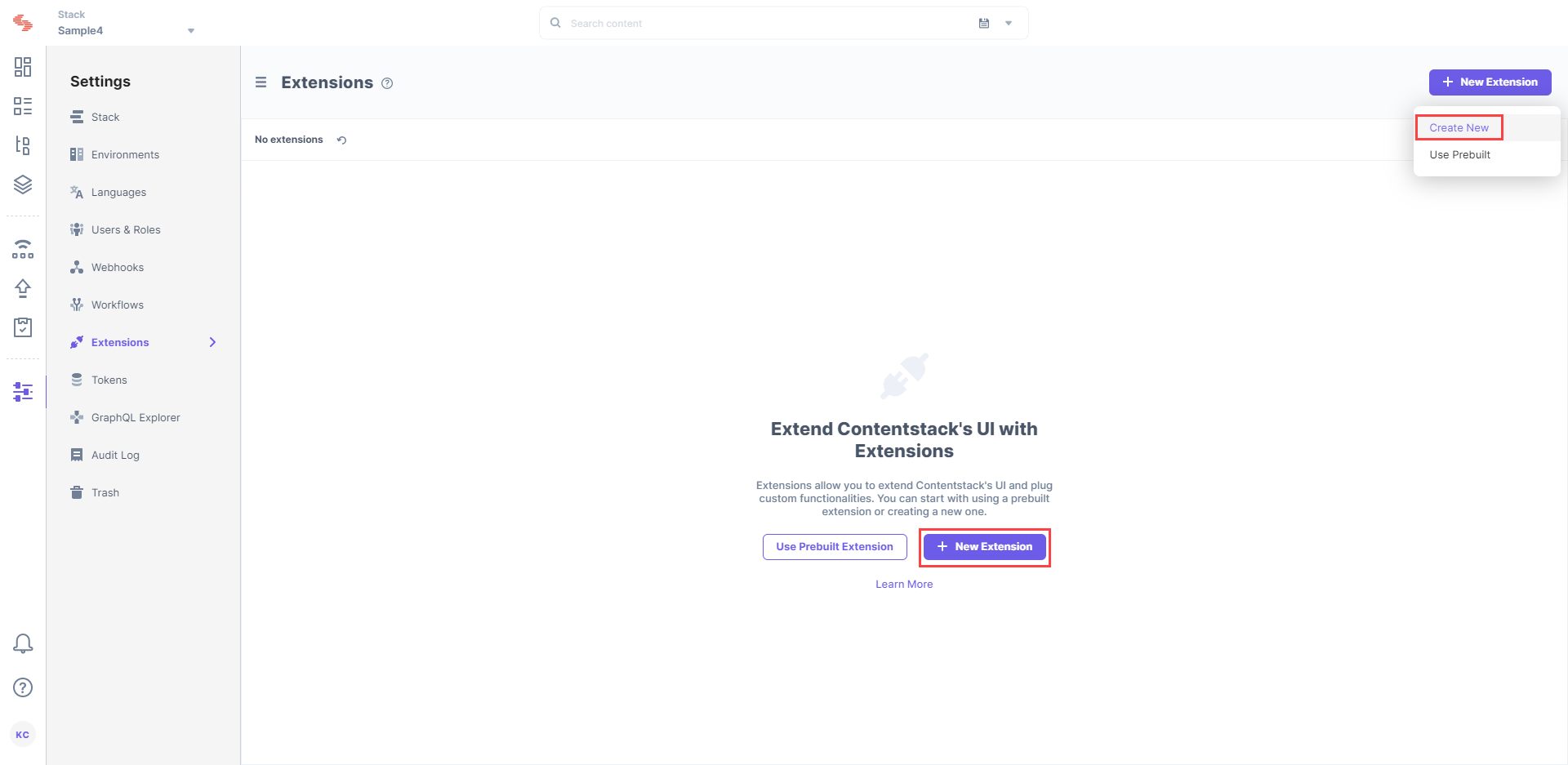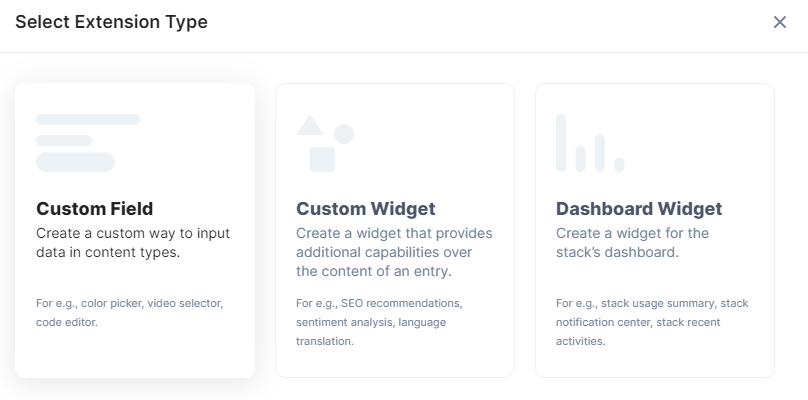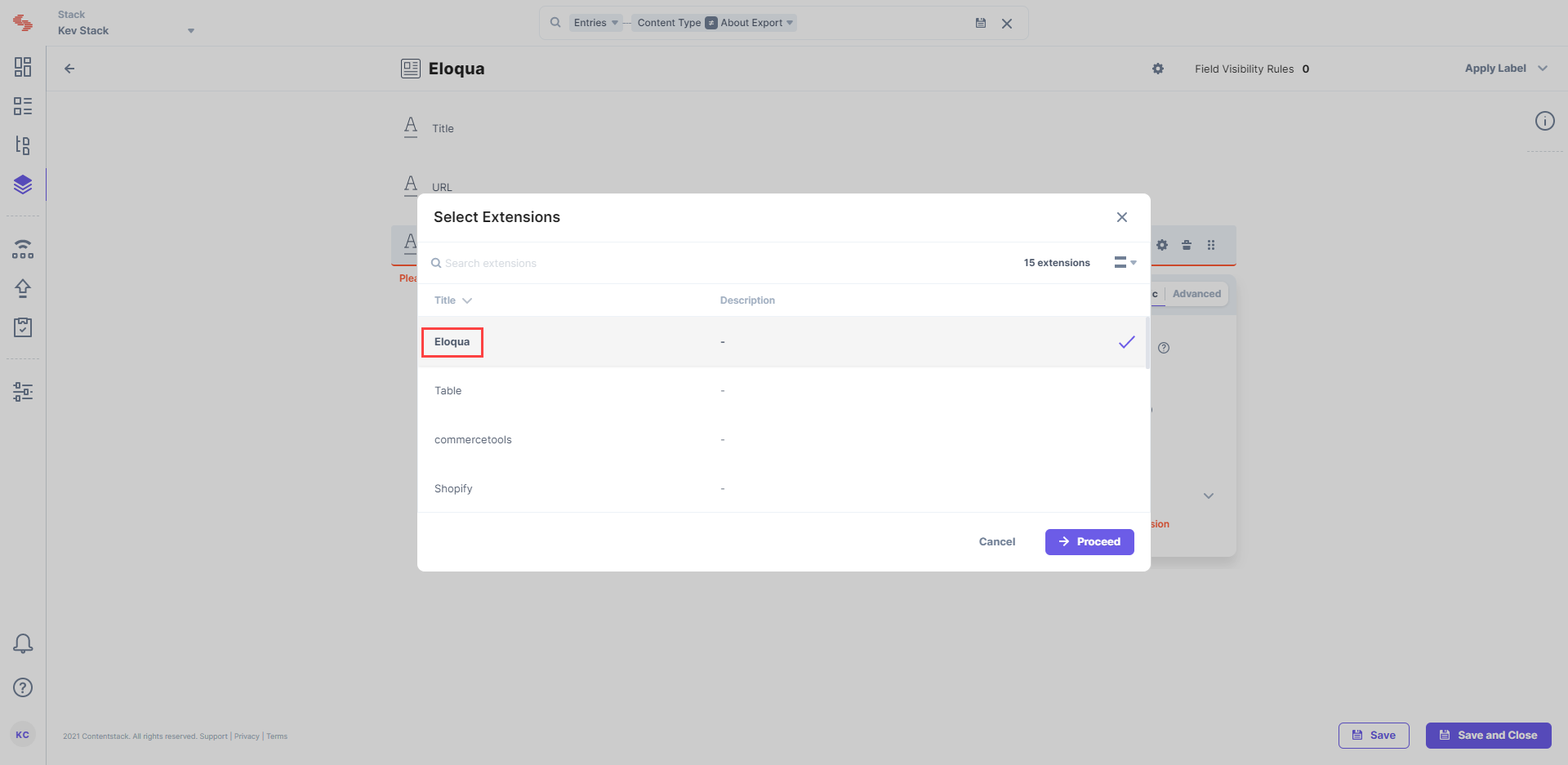Eloqua
Eloqua is a marketing automation platform by Oracle. You can use Eloqua as an extension (custom field) that fetches and displays your Eloqua forms into a field of your content type.
Subsequently, while creating the entry, you can select a suitable form in the entry. Based on the selection, the form will be rendered on the presentation layer using the form details from the entry.
You can configure the depth details saved for an Eloqua form through the extension config or field-level instance config. We have used AWS Lambda & Eloqua Forms Rest API 2.0 to retrieve the list of forms. You can find the AWS Lambda code (lambda.js) with the extension code.
This step-by-step guide explains how to create an Eloqua extension in Contentstack. The steps to be performed are as follows:
- Get your Eloqua account details
- Deploy Lambda function
- Add the Eloqua custom field extension to your stack
- Use your custom field
-
Get Your Eloqua Account Details
In order to set up this extension, you will need the following information from your Eloqua account:
- Your Eloqua Account Base URL
- Your Eloqua Account Basic Auth Token
Read more on how to retrieve Eloqua Base URL and Eloqua Basic Auth Token.
Note: The account from which we use the username and password to generate the basic auth token should have limited permissions for security.
Deploy Lambda Function
To protect sensitive information, such as Eloqua Basic Auth Token and to avoid Cross-Origin Resource Sharing (CORS) issues, we will use AWS Lambda function for this extension.
In the Environment variables section of AWS Lambda, enter the credentials against the variables as shown in the following image:
Add the Eloqua Custom Field Extension to Your Stack
To use this extension in Contentstack, log in to your Contentstack account and perform the following steps:
- Go to your stack and click on the “Settings” icon on the left navigation panel.
- Click on Extensions. You can also use the shortcut keys “alt + X” for Windows OS users, and “option + X” for Mac OS users to access the extensions menu.
- On the Extensions page, click on the + New Extension button, and select Create new.

- In the Select Extension Type window, select Custom Field.

- On the Create New Extension page, enter values in the fields as given below:
- Title (required): Provide a suitable title, for example “Eloqua,” for your custom field. This title will be visible when you select the extension in the custom field in your content type.
- Field data type (required): Select the data type in which the input data of the field should be saved in Contentstack. In this case, select JSON.
- Multiple (optional): Leave this field unchecked.
- Hosting method (required): Select Hosted by Contentstack as the hosting method for this content type.
- Extension source code - (required): Specify the extension code here. If Extensions are part of your plan, contact our Support team to get the code for the extension.
The support team will provide you with the source code (src file). Copy the code from the index.html file located in the root folder and paste it in the Extension source code field.
- Config Parameter (required):To configure this extension, you can either use the extension's Config Parameters field while setting up the extension. Alternatively, you can use the field's instance config. The configuration settings to be used are given below:
url - URL to trigger AWS lambda function
x-api-key - Your AWS API Gateway API key (optional)
depth - Depth of details you want to store for the form (optional, default: minimal)

Save the custom field.
Now, let’s understand how you can start using this custom field in your content type.
Use Your Custom Field
Once you have added a custom field, you can use it in your content type like any other field. To add a custom field in your content type, perform the following steps:
- Create a content type and add the Custom field to it.
- Under Select Extension, select the “Eloqua” field that you created and set the other properties. You can add other fields as per requirements.

- Finally, click on either Save or Save and Close to save your changes.
- Next, create an entry for this content type, and you will see the Eloqua field in action.
More Articles
We have a collection of similar other articles that you may like:





.jpg?format=pjpg&auto=webp)

